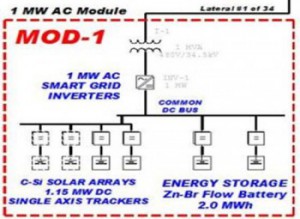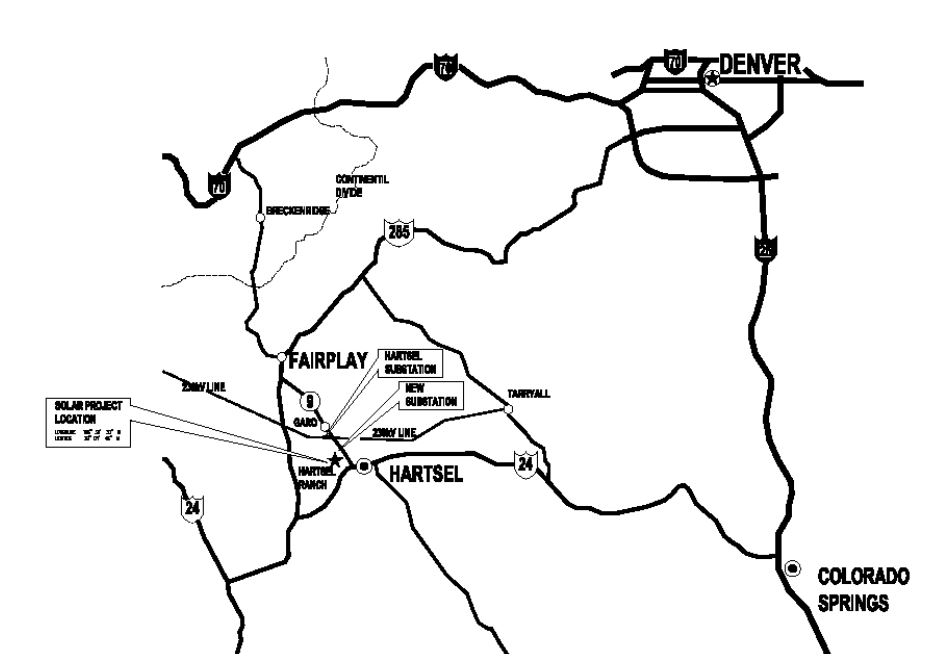Project Description
Project Name
34 MW Utility PV Solar Ranch with 68 MWh Flow Battery Storage
Location
Hartsel, Colorado
Challenge
Dispatchable Utility Scale Ground Mount Solar PV
Dispatchable Renewable Solar Resources
As employees of Chevron USA Inc. at the time, PowerSurety principals prepared and led the development of a firm, bid-bonded proposal in response to a 2009 All-Source request for proposals (RFP) for Semi-Dispatchable Renewable Capacity Resources (SDRC) from Xcel Energy’s Public Service of Colorado (PSCo) operating company, for the provision of not less than 30 MW of semi-dispatchable, utility-scale renewable resources through power purchase agreements (PPA). Eligible technologies under the PSCo RFP were solar photovoltaics (PV) with storage or solar thermal with fuel back-up.
The chosen host site of Chevron’s proposed dispatchable PV solar facility was a portion of the 480-acre Hartsel Springs Ranch in Colorado’s South Park valley. Aptly, the proposed facility was named Hartsel Springs Solar Ranch (HSSR). HSSR was developed to have the capacity to generate up to 34 megawatts of solar electricity with 68 MWh of storage capacity that Xcel would have the ability to remotely control power flows to and from.
PowerSurety staff, as Chevron employees, led the extensive design iteration process, land development and permitting, equipment selection and sourcing, bid pricing, and utility interconnection activities necessary to submit a compliant and awardable proposal.

Although the HSSR project wasn’t selected as the one to proceed to the PPA negotiation phase, our team did receive feedback from Xcel staff that the HSSR proposal was cost-competitive, technically competent, and by far, the most intriguing and innovative one they received under the SDRC RFP. In the end, Xcel had simply chosen to proceed down a more conservative path with solar backed by fuel-derived distributed generation.
Even though the proposed dispatchable utility solar PV project didn’t lead to an executed PPA, we thought it was worthy of sharing as a demonstration of the ability of PowerSurety staff to innovate and think outside the box in a structured, well-planned, and controlled manner.
Hartsel, Colorado
At an elevation of 9,000 feet above sea level and with less than 14 inches of snowfall each year, Hartsel, Colorado is one of the country’s most ideally suited locations as a solar energy resource, particularly for crystalline PV solar technology that operates optimally at low ambient temperatures.
Comparable to some of the nation’s premier solar geographies that contain expected irradiation levels of 5.3 kWh per square meter per day, the Hartsel location has the potential to radiate 6.0 to 6.5 kWh per square meter daily. Additionally, the site was in close proximity to a PSCo substation that interconnected with a 550-kV transmission line that fed into the Denver metro load center.
Elevation: 9,000 ft
National Lab and University Collaboration
Keeping in mind that the solicitation was released in January of 2009, Chevron intended for HSSR to become a national R&D test-bed for high-altitude solar applications, utility-scale smartgrid applications, and advanced energy storage technologies. A LEED-certified visitor and education center complete with a lecture hall and dining facilities was included as part of the proposal at no cost to Xcel Energy.
At the time of proposal submittal, the HSSR team had already met with officials at the Colorado School of Mines and the U.S. Department of Energy’s (DOE) National Renewable Energy Laboratory (NREL) to gauge their interest in participating in a HSSR collaborative wherein HSSR would provide access to site data for modeling and related R&D activities. Both organizations indicated interest in such an endeavor. This collaborative arrangement involving NREL, a highly respected higher education institution, and private sector cleantech manufacturers, would have provided an excellent opportunity for HSSR to generate interest and revenue by providing a unique platform for R&D and renewable energy curriculum development.
Dispatchable Utility Solar System Overview
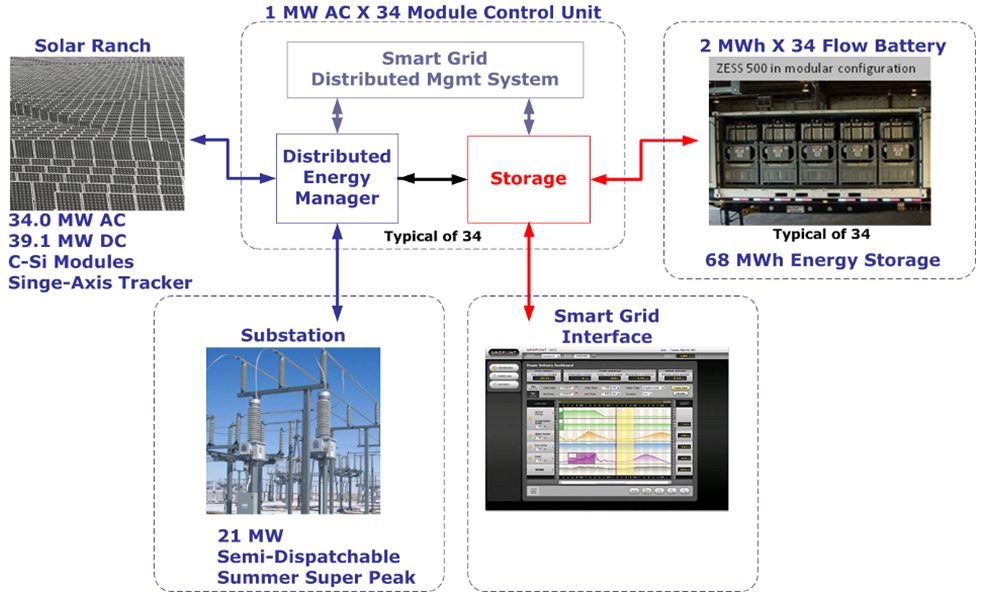
HSSR was designed to be constructed with 34-individual 1 MWe AC blocks, each of which would be configured with 2 MWh of advanced flow battery storage. This configuration was a key design element providing for maximum flexibility in energy storage and dispatch, maximum system reliability, and the potential to demonstrate multiple advanced energy storage and smartgrid technologies. For instance, one block could be configured with flow-battery storage, another with nanophosphate battery storage, and yet another with an onsite propane-fired fuel cell, allowing for multiple parallel demonstration projects. Any of these technologies could be deployed in a tightly controlled and disciplined manner, minimizing capital costs while reducing risk.
The system’s modular design allowed for a “plug-and-play” approach of virtually all DC-based electrical generation or storage technologies as they became available. Such an approach was intended to have created a new U.S. model for rational and disciplined technology commercialization and deployment. However, for budgeting, proforma, and system design reasons, the HSSR team assumed that the initial storage technology would be flow batteries. Given the modularity of the entire system, Xcel was also given the option of storage being provided for on a portion of the 34 1-MWe solar blocks.
Phased Approach for Lower Costs
Xcel’s All-Source SDRC RFP was rumored to be the first of several calls for PPA-based dispatchable renewable energy projects. As such, in order to minimize development costs and offer a manageable initial project size, a decision was made by the HSSR team to offer a phased approach to a single-site facility that could host and viably transmit up to 100 MW of solar PV output capacity.
The advanced energy storage system was designed to consist of 34 flow battery modules integrated into each of the 1-MW solar array blocks. Each battery module consisted of four separate battery housings connected in parallel and providing 2.0 MWh of electrical energy storage per single MW block (AC) of solar field, with a peak charge/discharge rate of 1 MW.
One of the most important attributes of grid-based energy storage is discharge duration flexibility. The HSSR energy storage system was designed to not only have a wide range of discharge rate capability up to the peak amount, but it would also have an essentially flat storage capacity curve of between 2 to 7 hours. This storage and discharge efficiency would allow grid operators enhanced flexibility in maximizing storage economies. Since Xcel’s challenge was to provide only slightly more power than customers need at any particular moment in time, the HSSR system would provide the energy resource to mitigate peaks and valleys on a section of the distribution grid prone to fluctuations.
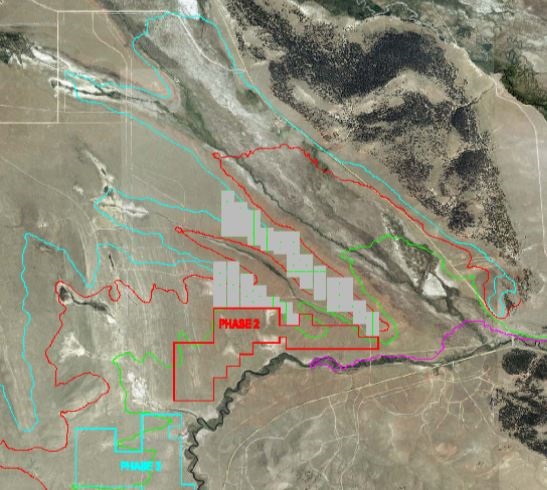
TURNING SEMI-DISPATCHABLE INTO DISPATCHABLE
TURNING
SEMI-DISPATCHABLE
INTO
DISPATCHABLE
National Testbed w/ 68 MWh of Storage Capacity
HSSR was to be constructed of 34 individual 1 MWe AC blocks, each of which will be configured with 2 MWh of advanced flow battery storage. This configuration was a key design element providing for maximum flexibility in energy storage and dispatch, maximum system reliability, and the potential to demonstrate multiple advanced energy storage technologies and SmartGrid methodologies.Flow Battery Technology
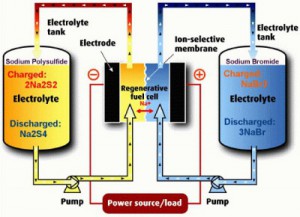
Common DC Bus Innovation
Each 1-MW solar module would share a DC bus with a 2-MWh energy storage lithium-bromine (Li-Br) flow battery to provide a distributed storage capability of 68 MWh. The battery storage system would be capable of storing either solar-sourced or grid-supplied energy integrated into the utilities SmartGrid operations using a GridPoint™ IT platform.Storage Block Diagram
